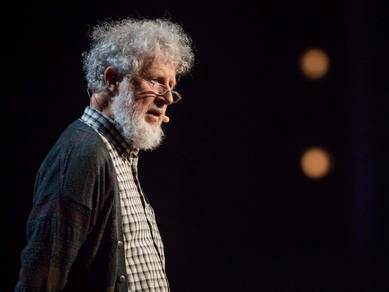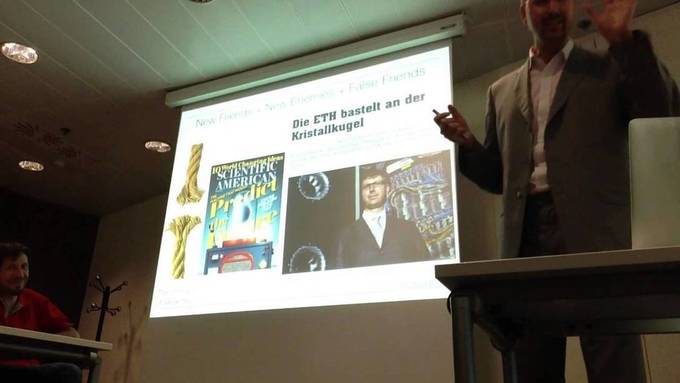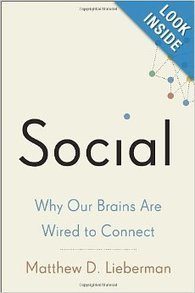Social Factors in Epidemiology
Despite the invention of control measures like vaccines, infectious diseases remain part of human existence. Ideas, sentiments, or information can also be contagious. Such social contagion is akin to biological contagion: Both spread through a replication process that is blind to the consequences for the individual or population, and if each person transmits to more than one person, the explosive power of exponential growth creates an epidemic. Social contagions may cause irrational “fever.” Isaac Newton, having lost £20,000 in the speculative South Sea Bubble, commented that he could “calculate the movement of the stars, but not the madness of men”. Systems in which both contagion types are coupled to one another—an infectious disease spreading by biological contagion and a social contagion concerning the disease—offer unique scientific challenges and are increasingly important for public health.
Social Factors in Epidemiology
Chris T. Bauch, Alison P. Galvani
Science 4 October 2013:
Vol. 342 no. 6154 pp. 47-49
http://dx.doi.org/10.1126/science.1244492




The Uses of Big Data in Cities
There is much enthusiasm currently about the possibilities created by new and more extensive sources of data to better understand and manage cities. Here, I explore how big data can be useful in urban planning by formalizing the planning process as a general computational problem. I show that, under general conditions, new sources of data coordinated with urban policy can be applied following fundamental principles of engineering to achieve new solutions to important age-old urban problems. I also show, that comprehensive urban planning is computationally intractable (i.e. practically impossible) in large cities, regardless of the amounts of data available. This dilemma between the need for planning and coordination and its impossibility in detail is resolved by the recognition that cities are first and foremost self-organizing social networks embedded in space and enabled by urban infrastructure and services. As such the primary role of big data in cities is to facilitate information flows and mechanisms of learning and coordination by heterogeneous individuals. However, processes of self-organization in cities, as well as of service improvement and expansion, must rely on general principles that enforce necessary conditions for cities to operate and evolve. Such ideas are the core a developing scientific theory of cities, which is itself enabled by the growing availability of quantitative data on thousands of cities worldwide, across different geographies and levels of development. These three uses of data and information technologies in cities constitute then the necessary pillars for more successful urban policy and management that encourages, and does not stifle, the fundamental role of cities as engines of development and innovation in human societies.
The Uses of Big Data in Cities
Luís M. A. Bettencourt
http://www.santafe.edu/research/working-papers/abstract/1c669193b79cb42f44ce5e0e63928bb0/




Self-propagation of pathogenic protein aggregates in neurodegenerative diseases
For several decades scientists have speculated that the key to understanding age-related neurodegenerative disorders may be found in the unusual biology of the prion diseases. Recently, owing largely to the advent of new disease models, this hypothesis has gained experimental momentum. In a remarkable variety of diseases, specific proteins have been found to misfold and aggregate into seeds that structurally corrupt like proteins, causing them to aggregate and form pathogenic assemblies ranging from small oligomers to large masses of amyloid. Proteinaceous seeds can therefore serve as self-propagating agents for the instigation and progression of disease. Alzheimer’s disease and other cerebral proteopathies seem to arise from the de novo misfolding and sustained corruption of endogenous proteins, whereas prion diseases can also be infectious in origin. However, the outcome in all cases is the functional compromise of the nervous system, because the aggregated proteins gain a toxic function and/or lose their normal function. As a unifying pathogenic principle, the prion paradigm suggests broadly relevant therapeutic directions for a large class of currently intractable diseases.
Self-propagation of pathogenic protein aggregates in neurodegenerative diseases
Mathias Jucker & Lary C. Walker
Nature 501, 45–51 (05 September 2013)
http://dx.doi.org/10.1038/nature12481




Introduction to Focus Issue: Quantitative Approaches to Genetic Networks
Over 50 years ago, Monod and Jacob argued that the mechanisms controlling expression of individual genes in bacteria could be interconnected to generate genetic regulatory circuits that would underlie vital functions including oscillation and differentiation.1 The basic idea was that a diffusible protein, called a transcription factor, which is coded by one gene, could bind to the DNA molecule to modulate the rate of production of itself or other genes. Thus, the DNA combined with the transcription factors generated networks where the nodes of the network were the genes, and the transcription factors led to interactions between the genes. Although Jacob and Monod did not provide mathematical analyses, their prescient suggestions provided a basis for theoretical models of genetic control in terms of logical switching networks in which the logical states of genes updated following specific delays4,5,6 or in which there was synchronous updating of all variables.7 Alternatively, the logical structure and relationships could be embedded in differential equations8 as either discontinuous switching functions or sigmoidal functions.
Subsequent to these early papers, there has been a continuing research in theoretical models of genetic networks.9,10 However, sparked by advances in molecular biology and synthetic biology,11,12 there has been an accelerating interest in these theoretical models. This Focus issue gives an overview of many of the important advances and current research directions. In Sec. 2, we summarize the theoretical approaches to the analysis of models of genetic networks that are of particular interest to the nonlinear dynamics community. We discuss the applications of theoretical approaches to analysis of naturally occurring biological systems in Sec. 3 and to synthetic biology in Sec. 4.
Introduction to Focus Issue: Quantitative Approaches to Genetic Networks
Réka Albert, James J. Collins, Leon Glass
Chaos 23, 025001 (2013)
http://chaos.aip.org/resource/1/chaoeh/v23/i2/p025001_s1?view=fulltext&Track=CHAOSSEPTFI13




A review of morphogenetic engineering
Generally, phenomena of spontaneous pattern formation are random and repetitive, whereas elaborate devices are the deterministic product of human design. Yet, biological organisms and collective insect constructions are exceptional examples of complex systems (CS) that are both architectured and self-organized. Can we understand their precise self-formation capabilities and integrate them with technological planning? Can physical systems be endowed with information, or informational systems be embedded in physics, to create autonomous morphologies and functions? To answer these questions, we have launched in 2009, and developed through a series of workshops and a collective book, a new field of research called morphogenetic engineering. It is the first initiative of its kind to rally and promote models and implementations of complex self-architecturing systems. Particular emphasis is set on the programmability and computational abilities of self-organization, properties that are often underappreciated in CS science—while, conversely, the benefits of self-organization are often underappreciated in engineering methodologies.
A review of morphogenetic engineering
René Doursat, Hiroki Sayama, Olivier Michel
Natural Computing
September 2013
http://link.springer.com/article/10.1007/s11047-013-9398-1




Quantifying Long-Term Scientific Impact
The lack of predictability of citation-based measures frequently used to gauge impact, from impact factors to short-term citations, raises a fundamental question: Is there long-term predictability in citation patterns? Here, we derive a mechanistic model for the citation dynamics of individual papers, allowing us to collapse the citation histories of papers from different journals and disciplines into a single curve, indicating that all papers tend to follow the same universal temporal pattern. The observed patterns not only help us uncover basic mechanisms that govern scientific impact but also offer reliable measures of influence that may have potential policy implications.
Quantifying Long-Term Scientific Impact
Dashun Wang, Chaoming Song, Albert-László Barabási
Science 4 October 2013:
Vol. 342 no. 6154 pp. 127-132
http://dx.doi.org/10.1126/science.1237825




From Matter to Self-Organizing Life
Eigen aims to integrate current scientific knowledge from different fields to show that evolution is a physical process based on clear physical laws. (...)
The book weaves together five chapters (“Matter and Energy,” “Energy and Entropy,” “Entropy and Information,” “Information and Complexity,” and “Complexity and Self-Organisation”), each organized into ten questions. Some of the questions are of the kind that kids would ask: “How many trees make a wood?” or “How large is zero?” But most kids will not understand the answers that Eigen offers.
From Matter to Self-Organizing Life
Arne Traulsen
From Strange Simplicity to Complex Familiarity A Treatise on Matter, Information, Life, and Thought by Manfred Eigen Oxford University Press, Oxford, 2013. 754 pp. $225, £125. ISBN 9780198570219.
Science 4 October 2013:
Vol. 342 no. 6154 pp. 39-40
http://dx.doi.org/10.1126/science.1243730
Complexity Digest's insight:
Book at
http://www.amazon.com/gp/product/019857021X/ref=as_li_ss_tl?ie=UTF8&camp=1789&creative=390957&creativeASIN=019857021X&linkCode=as2&tag=complexes-20



Special Issue: Communication in Science: Pressures and Predators
Science's Special Issue on Communication in Science: Pressures and Predators includes free news and reviews on the lack of scrutiny at open-access journals, the rarity of published negative studies, and publishing sensitive data.
http://www.sciencemag.org/site/special/scicomm/index.xhtml




Ten Simple Rules for Cultivating Open Science and Collaborative R&D
Rule 1: Get the Incentives Right—Learn from the Past
Rule 2: Make Your Controlled Collaborations Win-Win-Win
Rule 3: Understand What Works—and What Doesn't
Rule 4: Lead as a Coach, Not a CEO
Rule 5: Diversify Your Contributors
Rule 6: Diversify Your Customers
Rule 7: Don't Reinvent the Wheel
Rule 8: Think Big
Rule 9: Encourage Supportive Policies and Tools
Rule 10: Grow the Commons
Masum H, Rao A, Good BM, Todd MH, Edwards AM, et al. (2013) Ten Simple Rules for Cultivating Open Science and Collaborative R&D. PLoS Comput Biol 9(9): e1003244.
http://dx.doi.org/10.1371/journal.pcbi.1003244




Multilayer Networks
Most real and engineered systems include multiple subsystems and layers of connectivity, and it is important to take such features into account to try to obtain a complete understanding of these systems. It is thus necessary to generalize "traditional" network theory by developing (and validating) a framework and associated tools to study multilayer systems in a comprehensive fashion. The origins of such efforts occurred several decades ago, but now the study of multilayer networks has become one of the major directions in network science. In this paper, we discuss the history of multilayer networks (and related concepts) and then review the exploding body of work on such networks. To unify the disparate terminology in the large body of recent work, we discuss a general framework for multilayer networks, construct a dictionary of terminology to relate the numerous existing concepts to each other, and provide a thorough discussion that compares, contrasts, and translates between related notions such as multilayer networks, multiplex networks, interdependent networks, networks of networks, and many others. We also survey and discuss existing data sets that can be represented as multilayer networks. We review attempts to generalize single-layer-network diagnostics to multilayer networks and discuss the rapidly expanding research on multilayer-network models and notions like community detection, connected components, tensor decompositions, and various types of dynamical processes on multilayer networks. We conclude with a summary and an outlook.
Multilayer Networks
Mikko Kivelä, Alexandre Arenas, Marc Barthelemy, James P. Gleeson, Yamir Moreno, Mason A. Porter
http://arxiv.org/abs/1309.7233




James Flynn: Why our IQ levels are higher than our grandparents'

It's called the "Flynn effect" -- the fact that each generation scores higher on an IQ test than the generation before it. Are we actually getting smarter, or just thinking differently? In this fast-paced spin through the cognitive history of the 20th century, moral philosopher James Flynn suggests that changes in the way we think have had surprising (and not always positive) consequences.
http://www.ted.com/talks/james_flynn_why_our_iq_levels_are_higher_than_our_grandparents.html




The Evolution of FuturICT - Lessons Learned and Prospects for the Future

The Evolution of FuturICT - Lessons Learned and Prospects for the Future.
Dirk Helbing, ETH Zürich.
September 2013.
http://www.youtube.com/watch?v=Pv6uBzu3x4o
See Also:
Sensorship or Censorship - That's the Question
http://www.youtube.com/watch?v=1L1FECsY8Vs
How Understanding Collective Behavior Can Save Human Lives
http://www.youtube.com/watch?v=1NgyLLtdMG8
FuturICT@Yahoo! Creating a Planetary Nervous System & Global Participatory Platform
http://www.youtube.com/watch?v=47Vr_ccb4bU




War, space, and the evolution of Old World complex societies
How did human societies evolve from small groups, integrated by face-to-face cooperation, to huge anonymous societies of today? Why is there so much variation in the ability of different human populations to construct viable states? We developed a model that uses cultural evolution mechanisms to predict where and when the largest-scale complex societies should have arisen in human history. The model was simulated within a realistic landscape of the Afroeurasian landmass, and its predictions were tested against real data. Overall, the model did an excellent job predicting empirical patterns. Our results suggest a possible explanation as to why a long history of statehood is positively correlated with political stability, institutional quality, and income per capita.
War, space, and the evolution of Old World complex societies
Peter Turchin, Thomas E. Currie, Edward A. L. Turner, and Sergey Gavrilets
http://dx.doi.org/10.1073/pnas.1308825110PNAS September 23, 2013




Default Cascades in Complex Networks: Topology and Systemic Risk
The recent crisis has brought to the fore a crucial question that remains still open: what would be the optimal architecture of financial systems? We investigate the stability of several benchmark topologies in a simple default cascading dynamics in bank networks. We analyze the interplay of several crucial drivers, i.e., network topology, banks' capital ratios, market illiquidity, and random vs targeted shocks. We find that, in general, topology matters only – but substantially – when the market is illiquid. No single topology is always superior to others. In particular, scale-free networks can be both more robust and more fragile than homogeneous architectures. This finding has important policy implications. We also apply our methodology to a comprehensive dataset of an interbank market from 1999 to 2011.
Default Cascades in Complex Networks: Topology and Systemic Risk
Tarik Roukny, Hugues Bersini, Hugues Pirotte, Guido Caldarelli & Stefano Battiston
Scientific Reports 3, Article number: 2759
http://dx.doi.org/10.1038/srep02759




A comment on “Towards a rigorous framework for studying 2-player continuous games” by Shade T. Shutters
[...] any attempt to map the evolutionary dynamics of continuous games to discrete 2×2-games is bound to fail, because what matters for the evolution of continuous cooperative traits are the games played between residents and nearby mutants, and the nature of such games may change as a result of the evolutionary process.




Social: Why Our Brains Are Wired to Connect (by Matthew D. Lieberman)

In Social, renowned psychologist Matthew Lieberman explores groundbreaking research in social neuroscience revealing that our need to connect with other people is even more fundamental, more basic, than our need for food or shelter. Because of this, our brain uses its spare time to learn about the social world – other people and our relation to them. It is believed that we must commit 10,000 hours to master a skill. According to Lieberman, each of us has spent 10,000 hours learning to make sense of people and groups by the time we are ten.
Social argues that our need to reach out to and connect with others is a primary driver behind our behavior. We believe that pain and pleasure alone guide our actions. Yet, new research using fMRI – including a great deal of original research conducted by Lieberman and his UCLA lab -- shows that our brains react to social pain and pleasure in much the same way as they do to physical pain and pleasure. Fortunately, the brain has evolved sophisticated mechanisms for securing our place in the social world. We have a unique ability to read other people’s minds, to figure out their hopes, fears, and motivations, allowing us to effectively coordinate our lives with one another. And our most private sense of who we are is intimately linked to the important people and groups in our lives. This wiring often leads us to restrain our selfish impulses for the greater good. These mechanisms lead to behavior that might seem irrational, but is really just the result of our deep social wiring and necessary for our success as a species.
Based on the latest cutting edge research, the findings in Social have important real-world implications. Our schools and businesses, for example, attempt to minimalize social distractions. But this is exactly the wrong thing to do to encourage engagement and learning, and literally shuts down the social brain, leaving powerful neuro-cognitive resources untapped. The insights revealed in this pioneering book suggest ways to improve learning in schools, make the workplace more productive, and improve our overall well-being.




Undiluted Hocus-Pocus: The Autobiography of Martin Gardner (by Martin Gardner, James Randi, Persi Diaconis)

Martin Gardner wrote the Mathematical Games column for Scientific American for twenty-five years and published more than seventy books on topics as diverse as magic, philosophy, religion, pseudoscience, and Alice in Wonderland. His informal, recreational approach to mathematics delighted countless readers and inspired many to pursue careers in mathematics and the sciences. Gardner's illuminating autobiography is a disarmingly candid self-portrait of the man evolutionary theorist Stephen Jay Gould called our "single brightest beacon" for the defense of rationality and good science against mysticism and anti-intellectualism.Gardner takes readers from his childhood in Oklahoma to his college days at the University of Chicago, his service in the navy, and his varied and wide-ranging professional pursuits. Before becoming a columnist for Scientific American, he was a caseworker in Chicago during the Great Depression, a reporter for the Tulsa Tribune, an editor for Humpty Dumpty, and a short-story writer for Esquire, among other jobs. Gardner shares colorful anecdotes about the many fascinating people he met and mentored, and voices strong opinions on the subjects that matter to him most, from his love of mathematics to his uncompromising stance against pseudoscience. For Gardner, our mathematically structured universe is undiluted hocus-pocus--a marvelous enigma, in other words.
Undiluted Hocus-Pocus offers a rare, intimate look at Gardner's life and work, and the experiences that shaped both.




The Compatibility Gene: How Our Bodies Fight Disease, Attract Others, and Define Our Selves (by Daniel M. Davis)

The Compatibility Gene takes readers on a global journey of discovery spanning 60 years, involving scores of scientists, and encompassing the history of transplants and immunology. That journey has revealed astonishing links between who we are as individuals and our never-ceasing struggle to survive disease.
Most of the 25,000 genes we possess are the same for all of us. Compatibility genes are those that vary most from person to person and give each of us a unique molecular signature. These genes determine both the extent to which we are susceptible to a vast range of illnesses and the different ways each of us fights disease. In The Compatibility Gene, distinguished immunologist Daniel Davis draws on new research to suggest a number of even more fascinating-and controversial-conclusions about compatibility genes: that we find others more or less sexy according to their compatibility genes (dating services are starting to match people in this way); that the wiring between some neurons is kept or broken according to the activity of compatibility genes; and that compatibility genes influence the chances of a couple having a successful pregnancy. Profoundly personal, life-forming and life-changing decisions appear to be governed by the actions of a few inherited genes. Most importantly, Davis proposes that because we each respond slightly differently to any particular disease, in the not-too-distant future vaccines and other medications may be tailored to match our compatibility genes, a revolutionary breakthrough in the fight against disease.
Including vivid portraits of the scientists who worked tirelessly to unlock the secrets of compatibility genes, as well as patients who survived disease due to lucky genetic inheritances, The Compatibility Gene explains an aspect of human biology that will undoubtedly have profound impacts on medical practice in the 21st Century.




Scarcity: Why Having Too Little Means So Much (by Sendhil Mullainathan and Eldar Shafir)

A surprising and intriguing examination of how scarcity—and our flawed responses to it—shapes our lives, our society, and our culture
Why do successful people get things done at the last minute? Why does poverty persist? Why do organizations get stuck firefighting? Why do the lonely find it hard to make friends? These questions seem unconnected, yet Sendhil Mullainathan and Eldar Shafir show that they are all are examples of a mind-set produced by scarcity.
Drawing on cutting-edge research from behavioral science and economics, Mullainathan and Shafir show that scarcity creates a similar psychology for everyone struggling to manage with less than they need. Busy people fail to manage their time efficiently for the same reasons the poor and those maxed out on credit cards fail to manage their money. The dynamics of scarcity reveal why dieters find it hard to resist temptation, why students and busy executives mismanage their time, and why sugarcane farmers are smarter after harvest than before. Once we start thinking in terms of scarcity and the strategies it imposes, the problems of modern life come into sharper focus.
Mullainathan and Shafir discuss how scarcity affects our daily lives, recounting anecdotes of their own foibles and making surprising connections that bring this research alive. Their book provides a new way of understanding why the poor stay poor and the busy stay busy, and it reveals not only how scarcity leads us astray but also how individuals and organizations can better manage scarcity for greater satisfaction and success.




Consciousness and the Social Brain (by Michael S. A. Graziano)

What is consciousness and how can a brain, a mere collection of neurons, create it? In Consciousness and the Social Brain, Princeton neuroscientist Michael Graziano lays out an audacious new theory to account for the deepest mystery of them all. The human brain has evolved a complex circuitry that allows it to be socially intelligent. This social machinery has only just begun to be studied in detail. One function of this circuitry is to attribute awareness to others: to compute that person Y is aware of thing X. In Graziano's theory, the machinery that attributes awareness to others also attributes it to oneself. Damage that machinery and you disrupt your own awareness. Graziano discusses the science, the evidence, the philosophy, and the surprising implications of this new theory.




Discontinuity and Complexity in Nonlinear Physical Systems (edited by José A. Tenreiro Machado et al.)

Discontinuity in Nonlinear Physical Systems explores recent developments in experimental research in this broad field, organized in four distinct sections. Part I introduces the reader to the fractional dynamics and Lie group analysis for nonlinear partial differential equations. Part II covers chaos and complexity in nonlinear Hamiltonian systems, important to understand the resonance interactions in nonlinear dynamical systems, such as Tsunami waves and wildfire propagations; as well as Lev flights in chaotic trajectories, dynamical system synchronization and DNA information complexity analysis. Part III examines chaos and periodic motions in discontinuous dynamical systems, extensively present in a range of systems, including piecewise linear systems, vibro-impact systems and drilling systems in engineering. And in Part IV, engineering and financial nonlinearity are discussed. The mechanism of shock wave with saddle-node bifurcation and rotating disk stability will be presented, and the financial nonlinear models will be discussed.




Progress and Challenges in Dynamical Systems: Proceedings of the International Conference Dynamical Systems: 100 Years after Poincaré

This book contains papers based on talks given at the International Conference Dynamical Systems: 100 years after Poincaré held at the University of Oviedo, Gijón in Spain, September 2012. It provides an overview of the state of the art in the study of dynamical systems.
This book covers a broad range of topics, focusing on discrete and continuous dynamical systems, bifurcation theory, celestial mechanics, delay difference and differential equations, Hamiltonian systems and also the classic challenges in planar vector fields. It also details recent advances and new trends in the field, including applications to a wide range of disciplines such as biology, chemistry, physics and economics.




Nonlinear Approaches in Engineering Applications 2 (edited by Reza N Jazar, Liming Dai)

Nonlinear Approaches in Engineering Applications 2 focuses on the application of nonlinear approaches to different engineering and science problems. The selection of the topics for this book is based on the best papers presented in the ASME 2010 and 2011 in the tracks of Dynamic Systems and Control, Optimal Approaches in Nonlinear Dynamics and Acoustics, both of which were organized by the editors. For each selected topic, detailed concept development, derivations and relevant knowledge are provided for the convenience of the readers. The topics that have been selected are of great interest in the fields of engineering and physics and this book is designed to appeal to engineers and researchers working in a broad range of practical topics and approaches.




Recent Trends in Dynamical Systems: Proceedings of a Conference in Honor of Jürgen Scheurle (edited by Andreas Johann et al.)

This book presents the proceedings of a conference on dynamical systems held in honor of Jürgen Scheurle in January 2012. Through both original research papers and survey articles leading experts in the field offer overviews of the current state of the theory and its applications to mechanics and physics. In particular, the following aspects of the theory of dynamical systems are covered:
- Stability and bifurcation
- Geometric mechanics and control theory
- Invariant manifolds, attractors and chaos
- Fluid mechanics and elasticity
- Perturbations and multiscale problems
- Hamiltonian dynamics and KAM theory




Computational Models of Complex Systems (by Vijay Kumar Mago, Vahid Dabbaghian)

Computational and mathematical models provide us with the opportunities to investigate the complexities of real world problems. They allow us to apply our best analytical methods to define problems in a clearly mathematical manner and exhaustively test our solutions before committing expensive resources. This is made possible by assuming parameter(s) in a bounded environment, allowing for controllable experimentation, not always possible in live scenarios. For example, simulation of computational models allows the testing of theories in a manner that is both fundamentally deductive and experimental in nature. The main ingredients for such research ideas come from multiple disciplines and the importance of interdisciplinary research is well recognized by the scientific community. This book provides a window to the novel endeavours of the research communities to present their works by highlighting the value of computational modelling as a research tool when investigating complex systems. We hope that the readers will have stimulating experiences to pursue research in these directions.




Ingenious: Laura Mersini-Houghton

Laura Mersini-Houghton is on the trail of, quite literally, the biggest secret code going. Her analysis of the faint microwave radiation that permeates the sky, called the Cosmic Microwave Background, reaches a startling conclusion: She believes that it (along with recent particle physics data) provides definitive, empirical evidence that our universe is just one of many. If proven to be true, this would change our understanding of what nature is and where its laws come from. When we caught up with Mersini-Houghton in Ann Arbor, Michigan, we found someone who carried the weight of her work lightly. Quick to smile and full of anecdotes, Mersini-Houghton took us from the farthest reaches of the multiverse to her family home in communist Albania.
http://nautil.us/issue/6/secret-codes/ingenious-laura-mersini_houghton




Beyond the Horizon of the Universe

In its early moments, our universe was connected, or “entangled,” to other universes. As our universe rapidly grew and shed its quantum nature, it separated forever from all the other surviving universes in a process known as decoherence. But there is a deep principle of quantum mechanics, known as the Unitarity Principle, which states that information about a system, including a quantum wavelike universe, is never lost. This principle guaranteed that the mark of the entanglement of our universe with others is preserved somewhere in today’s sky.
http://nautil.us/issue/6/secret-codes/beyond-the-horizon-of-the-universe
Complexity Digest's insight:
Can we say something about what happened before our universe began?




Tenure Track Research Professor Position in Computer Science at UNAM
The Computer Science Department of the Instituto de Investigaciones en Matemáticas Aplicadas y en Sistemas (IIMAS) of the Universidad Nacional Autónoma de México (UNAM) has a open call for research professors.
http://complexes.blogspot.mx/2013/10/tenure-track-research-professor.html




Complex Networks Thematic School, Les Houches, April 7-18, 2014
Les Houches thematic school on: structure and dynamics of complex networks
The field of complex network has reached a mature stage, with many concepts, tools and methods widely used by many research groups.
The school aims at giving a solid fundamental background to PhD students and young researchers working with or on complex networks, by introducing the main concepts and tools that are useful in this field. The school will introduce the concepts and tools of graph theory, statistical physics, statistical analysis, modeling, and visualization used in the field of complex networks.
http://leshouches2014.weebly.com




No hay comentarios:
Publicar un comentario